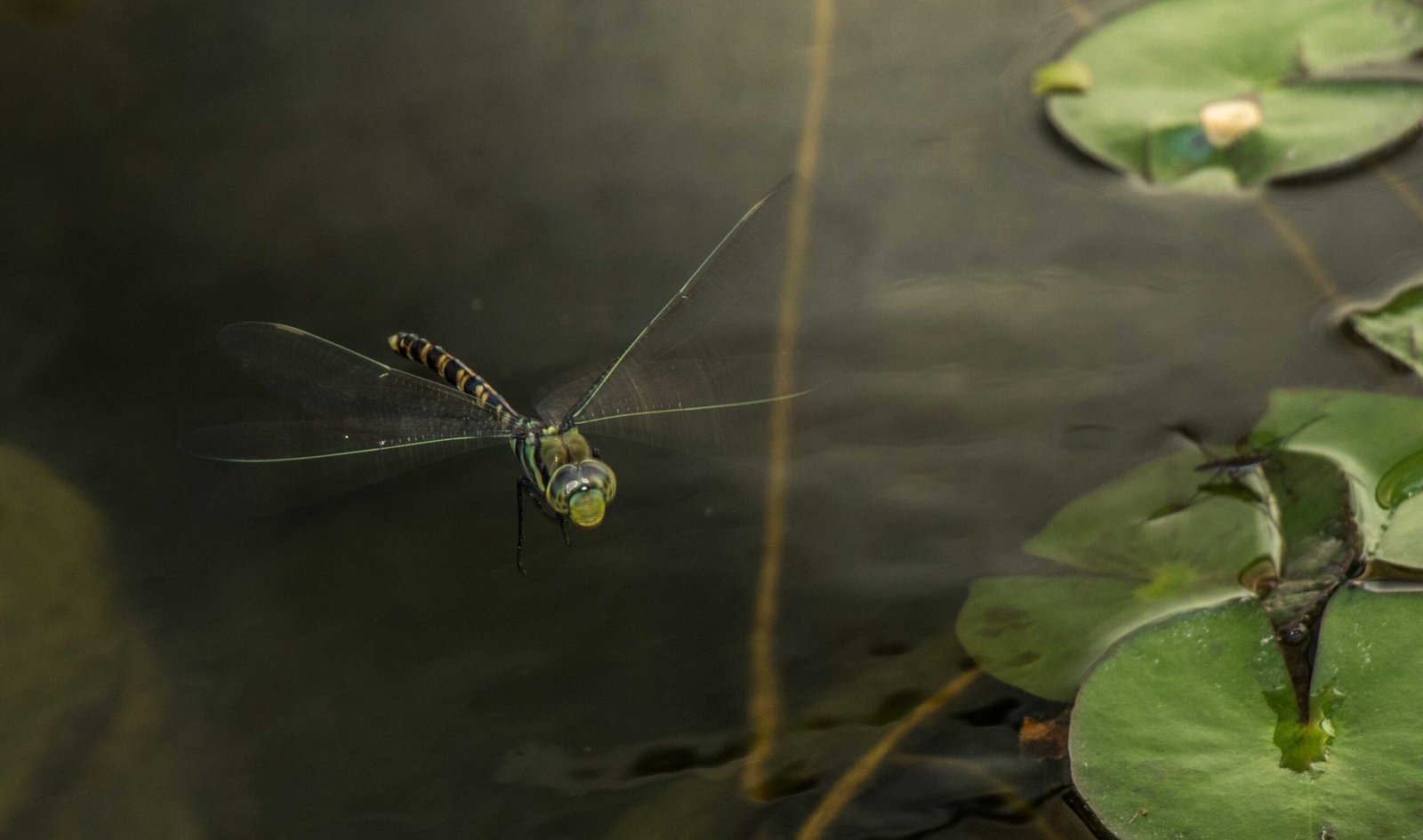In the natural cycle of life, resources are limited and nothing is wasted. New life is born each moment, but at the same time some other life comes to an end so that the nutrients once again enter the circle of life.
We got to witness this up-close and personally during a nature walk recently within our resort premises. We noticed a large dragonfly, later identified as a female of a Blue Darner (Anax immaculifrons) species, flying around our main building of our lodge. She started circling the water tank in front of the main building, and we understood what was going to happen next. She landed on one of the water lily leafs and dipped the tip of her abdomen in the water. She was releasing eggs in the water body. Dragonflies lay eggs in thousands at one go, and hence she had to repeat the action a few times. Quite excited by what we got to witness, we left the spot.


Later in the evening, when I visited the main building again, I heard something fluttering. I wondered if this was a dragonfly stuck in the building, as that makes a similar sound, and tried to find the source of the noise. But what I found astounded me. The same dragonfly which had laid eggs sometime ago, was fighting for its life with a house gecko (Hemidactylus cf. flavivirdis). The latter half of the dragonfly’s body was already gobbled by the gecko, and only the head and wings were outside, which the dragonfly vibrated repeatedly in an attempt to get rid of the gecko. Finally, after a few minutes, the dragonfly’s head and wings detached from the remaining body and fell to the ground, while the gecko made away with what it had swallowed.

But what the gecko had not eaten did not go to waste either. Pretty soon an army of tiny, black ants carried what remained of the dragonfly’s body to their nest. A meal this size would definitely provide a lot of nutrients to the entire colony.

So the nutrients which made up the dragonfly’s body eventually ended up being useful for a few thousand dragonfly babies, a large gecko, and an entire colony of ants!
Sachin Sharma
Naturalist, Singinawa Jungle Lodge



